In the process of setting electoral districts, gerrymandering is a practice that attempts to establish a political advantage for a particular party or group by manipulating district boundaries to create partisan advantaged districts. The resulting district apportionment is known as a gerrymander; however, that word can also refer to the process. When used to allege that a given party is gaining disproportionate power, the term gerrymandering has negative connotations.
![Original-1812-Gerrymander[1]](https://madisondems.org/wp-content/uploads/2015/02/original-1812-gerrymander1.jpg?w=124) Printed in March 1812, this political cartoon was drawn in reaction to the newly drawn state senate election district of South Essex created by the Massachusetts legislature to favor the Democratic-Republican Party candidates of Governor Elbridge Gerry over the Federalists. The caricature satirizes the bizarre shape of a district in Essex County, Massachusetts as a dragon-like “monster.” Federalist newspaper editors and others at the time likened the district shape to a salamander, and the word gerrymander was a blend of that word and Governor Gerry’s last name.
Printed in March 1812, this political cartoon was drawn in reaction to the newly drawn state senate election district of South Essex created by the Massachusetts legislature to favor the Democratic-Republican Party candidates of Governor Elbridge Gerry over the Federalists. The caricature satirizes the bizarre shape of a district in Essex County, Massachusetts as a dragon-like “monster.” Federalist newspaper editors and others at the time likened the district shape to a salamander, and the word gerrymander was a blend of that word and Governor Gerry’s last name.
In addition to its use achieving desired electoral results for a particular party, gerrymandering may be used to help or hinder a particular demographic, such as a political, ethnic, racial, linguistic, religious, or class group, such as in U.S. federal voting district boundaries that produce a majority of constituents representative of African-American or other racial minorities, known as “majority-minority districts.”
The primary goals of gerrymandering are to maximize the effect of supporters’ votes and to minimize the effect of opponents’ votes. These can be accomplished through a number of ways:
- “Cracking” involves spreading voters of a particular type among many districts in order to deny them a sufficiently large voting bloc in any particular district. An example would be to split the voters in an urban area among several districts wherein the majority of voters are suburban, on the presumption that the two groups would vote differently, and the suburban voters would be far more likely to get their way in the elections.
- “Packing” is to concentrate as many voters of one type into a single electoral district to reduce their influence in other districts. In some cases, this may be done to obtain representation for a community of common interest (such as to create a majority-minority district), rather than to dilute that interest over several districts to a point of ineffectiveness (and, when minority groups are involved, to avoid possible racial discrimination). When the party controlling the districting process has a state-wide majority, packing is usually not necessary to attain partisan advantage; the minority party can generally be “cracked” everywhere. Packing is therefore more likely to be used for partisan advantage when the party controlling the districting process has a state-wide minority, because by forfeiting a few districts packed with the opposition, cracking can be used in forming the remaining districts.
- “Hijacking” redraws two districts in such a way as to force two incumbents of the same political party to run against each other in one district, ensuring that one of them will be eliminated, while usually leaving the other district to be won by someone from a different political party.
- “Kidnapping” aims to move areas where a certain elected official has significant support to another district, making it more difficult to win future elections with a new electorate. This is often employed against politicians who represent multiple urban areas, in which larger cities will be removed from the district in order to make the district more rural.
These tactics are typically combined in some form, creating a few “forfeit” seats for packed voters of one type in order to secure more seats and greater representation for voters of another type. This results in candidates of one party (the one responsible for the gerrymandering) winning by small majorities in most of the districts, and another party winning by a large majority in only a few of the districts.
